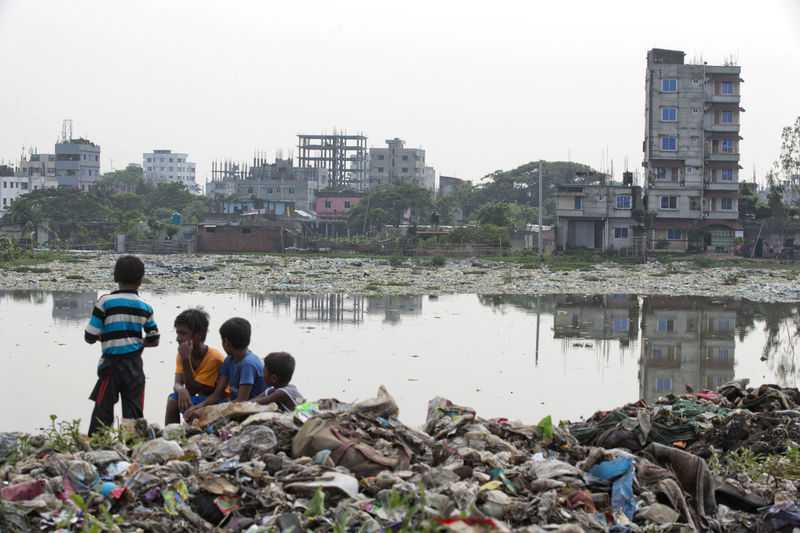U.N.: Climate change imperils 19 mil. Bangladesh children
06 April, 2019

The lives and futures of more than 19 million Bangladeshi children are at risk from the colossal impact of devastating floods, cyclones and other environmental disasters linked to climate change, according to a report by the United Nations children’s agency released Friday.
The UNICEF report said the estimate includes hundreds of thousands of Rohingya refugee children from Myanmar who are living in squalid camps in Bangladesh’s coastal district of Cox’s Bazar.
The report says that because of the impact of climate, families across Bangladesh, a low-lying delta nation crisscrossed by more than 130 rivers, have migrated to big cities from villages after losing their livelihoods to increasing salinity in arable land, flooding, or river bank erosion. It documents children being forced into sex trafficking or marriage to survive.
Around 12 million of the most affected children live in and around the powerful river systems which regularly burst their banks, UNICEF’s Dhaka spokesman, Jean-Jacques Simon, told the AP.
“In the big cities ... thousands of children arrive every day with their parents ... who are quite vulnerable to all kinds of exploitations,” Simon said.
Another 4.5 million children live in vast coastal areas regularly struck by powerful cyclones, including almost half a million Rohingya refugee children living in fragile bamboo and plastic shelters, according to the report.
An additional 3 million children live further inland, where farming communities suffer from frequent and severe periods of drought.
Bangladesh’s 6 million climate refugees could more than double by 2050, according to the report.
“The threats are real,” said Saleemul Huq, a senior fellow of the London-based International Institute for Environment and Development.
“The children are vulnerable as Bangladesh has remained dangerously exposed to adverse impacts of climate change despite its good record of resilience,” Huq said.
Bangladesh, a nation of 160 million people, has a history of violent cyclones and floods, with a mega cyclone in 1970 killing about 300,000 people in the southern region of what was then east Pakistan. Bangladesh won independence the following year in 1971.
Another powerful tropical cyclone struck southeastern Bangladesh and killed at least 138,000 people in 1991. Storm surges have continued to inundate vast areas across the coast, destroying homes and pushing saline water inland, though the loss of life has decreased sharply.
The report says that since the early 1990s, investment and action — both in disaster preparedness and risk reduction programs — have made vulnerable communities more resilient to the dangers of climatic shock.
The country has been lauded by global partners including the U.N. for building thousands of cyclone shelters and a vast network of hundreds of thousands of trained volunteers to evacuate people and give them basic medical support during major storms.
Bangladesh has also built flood-protection embankments across the country, but its geography means it remains vulnerable to floods and sea level rise.
TAG(s):
